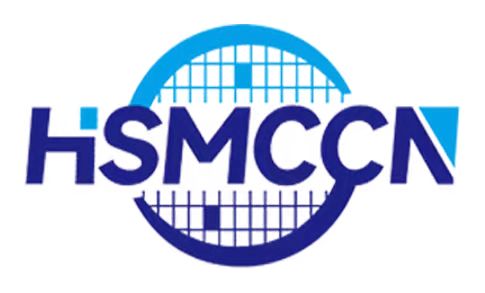
Privacy statement: Your privacy is very important to Us. Our company promises not to disclose your personal information to any external company with out your explicit permission.

Crafted from premium Handbag processes, it is carefully crafted and Leather bag processes ensures long-lasting quality and exceptional usability. We are a professional Leather bag OEM company, carefully crafting details to ensure high quality. Professional Handbag OEM, choose us, more worry-free and more assured.
With the steady development of the global economy and the continuous improvement of people's living standards, the leather goods industry is facing unprecedented development opportunities. Especially in the Chinese market, consumers' demands for quality and brand are increasing day by day, driving a strong growth momentum for high-end leather goods. Meanwhile, the saturation of the domestic market has prompted more and more leather goods enterprises to look towards overseas markets and actively expand new market spaces. However, fierce market competition has also posed numerous challenges to the leather goods industry, such as rising costs, strict quality requirements, and difficulties in marketing. Therefore, the leather goods production industry needs to continuously innovate, improve production efficiency, and optimize product structures to adapt to the new market demands.
Technological upgrades and innovations are crucial in the production process of leather goods. With the continuous development of technology, the leather goods industry is introducing advanced production techniques and equipment to enhance production efficiency and product quality. For instance, by introducing automated production lines and intelligent equipment, enterprises can automate and intellectualize the production process, reducing manual intervention and improving production efficiency. At the same time, these advanced equipment can precisely control various parameters in the production process, ensuring the stability and consistency of product quality. Additionally, by leveraging the Internet of Things technology, enterprises can realize real-time monitoring and data analysis of the production process, promptly discovering and addressing issues, and enhancing the fine-grained level of production management.
Besides technological upgrades, the leather goods industry is also facing the challenges of environmental protection and sustainable development. With consumers' increasing awareness of environmental protection, eco-friendly materials and production processes have gradually become important development directions for the leather goods industry. More and more enterprises are adopting eco-friendly materials and processes to reduce environmental pollution. For example, using recyclable and biodegradable materials to make leather goods can reduce the impact of products on the environment. Simultaneously, optimizing production processes to reduce the discharge of wastewater, exhaust gas, and other pollutants can achieve green production in the leather goods industry.
In terms of market competition, the leather goods industry needs to continuously innovate its products and services to enhance brand competitiveness. With the diversification of consumer demands, leather goods not only need to possess high quality and fashion sense but also need to satisfy consumers' personalized needs. Therefore, enterprises need to continuously launch new products, enhance the design and functionality of their products, and meet the diverse market demands. At the same time, by providing customized services, enterprises can fulfill consumers' pursuit of personalization and enhance their purchasing experience.
Moreover, marketing is also an indispensable aspect of the leather goods industry. In the fiercely competitive market, enterprises need to increase marketing efforts to enhance brand awareness and reputation. Through advertising, social media, the internet, and other channels, they can attract the attention of more potential consumers. Simultaneously, enterprises can interact with consumers through promotional activities and exhibitions, strengthening the emotional connection between the brand and consumers.
It is worth mentioning that digital transformation is becoming a new trend in the development of the leather goods industry. By introducing advanced technologies such as big data and cloud computing, enterprises can achieve precise analysis of market demands and optimize product design and production processes. Simultaneously, digital transformation can improve enterprises' operational efficiency and management level, reduce operating costs, and enhance their competitiveness.
Taking leather goods enterprises in Huadu District, Guangzhou, as an example, these enterprises actively respond to the call of digital transformation and invest substantial resources in it. By sorting out the entire process of research and development, production, procurement, logistics, and establishing internal process standards, they reduce communication costs and improve efficiency. In the process of digital transformation, these enterprises have not only improved production efficiency but also reduced costs, achieving rapid growth in performance.
However, digital transformation is not a one-time process. Enterprises need to overcome challenges in technology, talent, funds, and other aspects during the transformation. Therefore, the government and all sectors of society need to provide more support and assistance to leather goods enterprises to facilitate the smooth progress of digital transformation.
Looking ahead, the leather goods industry will continue to maintain a rapid development momentum. With consumers' increasing demands for quality and brand, as well as the popularization of environmental protection and sustainable development awareness, the leather goods industry will develop towards high quality, environmental protection, and intelligence. Simultaneously, with the continuous expansion of domestic and foreign markets and the deepening of digital transformation, the leather goods industry will usher in broader development spaces and more intense market competition.
In this era full of opportunities and challenges, the leather goods industry needs continuous innovation and progress to adapt to new market demands and changes. Only by doing so can it stand unbeatable in the fierce market competition and achieve sustained, healthy, and stable development.

Privacy statement: Your privacy is very important to Us. Our company promises not to disclose your personal information to any external company with out your explicit permission.

Fill in more information so that we can get in touch with you faster
Privacy statement: Your privacy is very important to Us. Our company promises not to disclose your personal information to any external company with out your explicit permission.